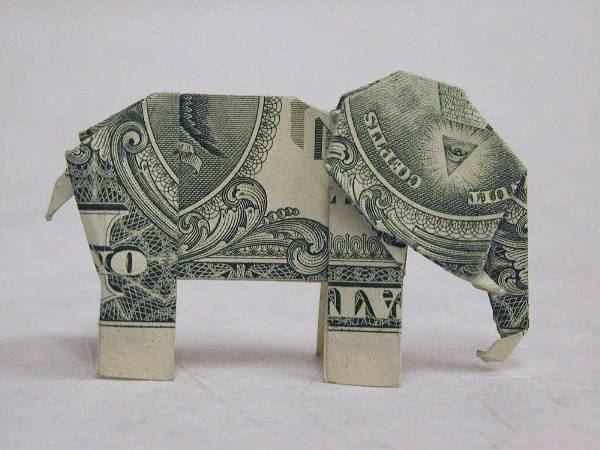 | ||
Moneygami (also known as money-gami) is a term that arose as a portmanteau of the words money and origami. It refers to shaping paper currency, such as Indian rupees and United States dollars, into pieces of art. The concept has been popularized by individuals such as Japanese pop artist Yosuke Hasegawa, who has had his work featured at an exhibition at the Tadu Art Gallery, and its creation can function as cultural commentary on the value that materialistic societies place on money. For example, one piece by Hasegawa involves Chairman Mao Zedong's folded head wearing a cowboy hat in a double image, based on Andy Warhol's famous picture of Elvis Presley.
The name alludes to traditional origami, which is the Japanese art of folding flat materials, generally paper, into figures resembling various objects. Other examples of moneygami include folding bills into clothing-like bits, such as dollar bills becoming bowties.
